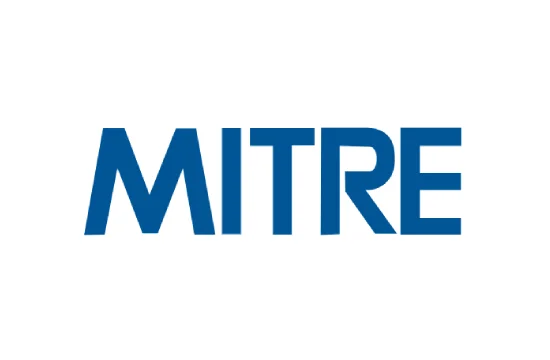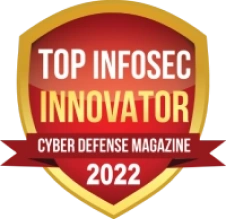What is MITRE?
MITRE is a not-for-profit organization that operates multiple federally funded research and development centers (FFRDCs) to support various government agencies in solving complex challenges in cybersecurity, defense, healthcare, and other critical sectors. Founded in 1958, MITRE was initially established to provide advanced technological solutions to the U.S. Air Force. Over the decades, it has expanded its reach, working closely with federal agencies, state governments, and private sector entities to enhance national security, technological advancement, and infrastructure resilience.
At its core, MITRE acts as a bridge between the government and the private sector, facilitating research, analysis, and development of cutting-edge technologies. Unlike commercial organizations, MITRE does not compete for government contracts but instead provides objective guidance and innovative solutions to help agencies address pressing security and operational challenges. It is known for its contributions to cybersecurity, artificial intelligence, aviation safety, and healthcare technology, among other fields.
One of MITRE’s most well-known contributions is the MITRE ATT&CK® framework, a globally recognized knowledge base of cyber adversary tactics and techniques. The ATT&CK framework has become an industry standard for threat intelligence, helping organizations worldwide improve their security posture by identifying and mitigating cyber threats effectively. This tool is widely used by cybersecurity professionals, government agencies, and enterprises to analyze attack patterns and strengthen their defenses.
Beyond cybersecurity, MITRE plays a crucial role in developing and supporting various national security initiatives. It collaborates with the Department of Defense (DoD),the Department of Homeland Security (DHS),and other key agencies to enhance threat detection, intelligence sharing, and emergency response capabilities. By leveraging its expertise in data analysis, artificial intelligence, and network security, MITRE helps shape policies and create technology-driven solutions that safeguard critical infrastructure.
MITRE’s influence extends to healthcare and aviation as well. The organization works on projects that improve patient care, enhance public health strategies, and develop innovative solutions for disease prevention. In aviation, MITRE contributes to air traffic management, ensuring safer and more efficient flight operations. These efforts underscore the organization’s broad impact across multiple industries.
With a commitment to public interest and mission-driven innovation, MITRE continues to be at the forefront of technological advancement and national security. Its work helps government agencies make informed decisions, mitigate risks, and implement strategies that protect both public and private sector interests. As cybersecurity threats and emerging technologies evolve, MITRE remains a key player in shaping the future of security, defense, and innovation.
The History and Mission of MITRE
MITRE was founded in 1958 as a not-for-profit organization to provide advanced technological support to the U.S. government, particularly the Air Force’s Semi-Automatic Ground Environment (SAGE) project. SAGE was a revolutionary air defense system designed to detect and respond to potential airborne threats during the Cold War. MITRE’s expertise in systems engineering and technology development quickly made it a valuable partner in national security efforts, leading to its expansion into other critical areas such as intelligence, cybersecurity, and public health.
As a federally funded research and development center (FFRDC),MITRE operates independently, focusing on providing unbiased, research-driven solutions to the government’s most complex challenges. Unlike traditional contractors, MITRE does not compete for government contracts, allowing it to maintain objectivity and serve as a trusted advisor. This independence ensures that MITRE can prioritize mission-driven innovation without commercial pressures.
Over the years, MITRE’s mission has expanded beyond defense to address a wide range of challenges affecting national security, public safety, and technological advancement. The organization partners with federal, state, and local governments, as well as academic institutions and private sector entities, to develop forward-thinking solutions that improve resilience and security. Key areas of focus include artificial intelligence, cybersecurity, healthcare, aviation, and critical infrastructure protection.
One of MITRE’s most impactful contributions is in the realm of cybersecurity, particularly through the development of the MITRE ATT&CK® framework. This widely adopted knowledge base categorizes cyber adversary tactics, techniques, and procedures (TTPs),helping organizations strengthen their defenses against emerging threats. The framework has become a global standard for cybersecurity professionals and is used by governments and private enterprises alike to enhance threat intelligence and incident response strategies.
MITRE’s mission extends beyond technology to policy and strategic planning. The organization plays a crucial role in shaping federal cybersecurity policies, contributing to research on artificial intelligence ethics, and supporting efforts to modernize the nation’s healthcare system. By leveraging its expertise across multiple domains, MITRE helps policymakers and industry leaders make informed decisions that enhance national security and public well-being.
Throughout its history, MITRE has remained committed to innovation in the public interest. By focusing on high-impact research, fostering collaboration, and developing cutting-edge solutions, MITRE continues to serve as a key partner to the government and industry in addressing the most pressing security and technological challenges of the modern era. Its legacy of excellence and commitment to mission-driven research ensure that it remains at the forefront of national security and innovation.
MITRE’s Role in Cybersecurity and Defense
MITRE plays a pivotal role in strengthening cybersecurity and defense by providing cutting-edge research, threat intelligence, and strategic guidance to government agencies, private sector organizations, and critical infrastructure operators. As a not-for-profit entity operating federally funded research and development centers (FFRDCs),MITRE delivers objective, technology-driven solutions to counter emerging cyber threats and enhance national security.
One of MITRE’s most well-known contributions to cybersecurity is the development of the MITRE ATT&CK® framework, a globally recognized knowledge base that categorizes adversary tactics, techniques, and procedures (TTPs). ATT&CK has become an essential tool for cybersecurity professionals, enabling organizations to improve threat detection, response, and mitigation strategies. The framework provides a standardized approach to understanding cyber threats and is widely used by governments, security teams, and enterprises to bolster their cybersecurity defenses.
Beyond ATT&CK, MITRE has developed other key cybersecurity initiatives, such as the MITRE Engage framework, which focuses on active cyber defense strategies, and CAPE (Cyber Analytics Platform & Evaluation Environment), which supports cyber risk assessment and analytics. These initiatives help organizations proactively defend against sophisticated cyber threats, reducing the risk of data breaches, ransomware attacks, and other forms of cyber warfare.
MITRE also collaborates closely with the U.S. Department of Defense (DoD),Department of Homeland Security (DHS),National Security Agency (NSA),and Cybersecurity and Infrastructure Security Agency (CISA) to develop policies, frameworks, and technologies that safeguard national security. The organization supports the defense sector by working on cyber resilience projects that enhance threat intelligence sharing, improve network security, and protect critical infrastructure from both nation-state actors and cybercriminal groups.
In addition to providing strategic guidance, MITRE contributes to zero trust security models, artificial intelligence-driven threat detection, and cyber resilience initiatives. By leveraging its expertise in artificial intelligence, data analytics, and network security, MITRE helps federal agencies and private organizations implement advanced security measures that anticipate and neutralize cyber threats before they can cause harm.
Another critical area of MITRE’s work in cybersecurity and defense is the protection of critical infrastructure, such as energy grids, financial systems, and healthcare networks. MITRE collaborates with industry leaders and policymakers to develop security protocols that ensure the resilience of essential services against cyberattacks. These efforts are increasingly important as cyber threats continue to evolve, targeting vital national assets that underpin economic stability and public safety.
MITRE’s role extends beyond defense and government sectors, as it also contributes to the broader cybersecurity community through open-source tools, public reports, and collaboration with cybersecurity researchers. By fostering innovation and knowledge-sharing, MITRE strengthens the global cybersecurity landscape, ensuring that organizations of all sizes have access to cutting-edge threat intelligence and best practices.
With cyber threats becoming more sophisticated and state-sponsored cyberattacks on the rise, MITRE remains a cornerstone of the U.S. cybersecurity and defense strategy. Its expertise, frameworks, and collaborative approach help shape national security policies, drive innovation, and equip organizations with the tools needed to combat the ever-evolving cyber threat landscape. Through its unwavering commitment to mission-driven research, MITRE continues to be a trusted partner in safeguarding the digital and physical security of the nation.






